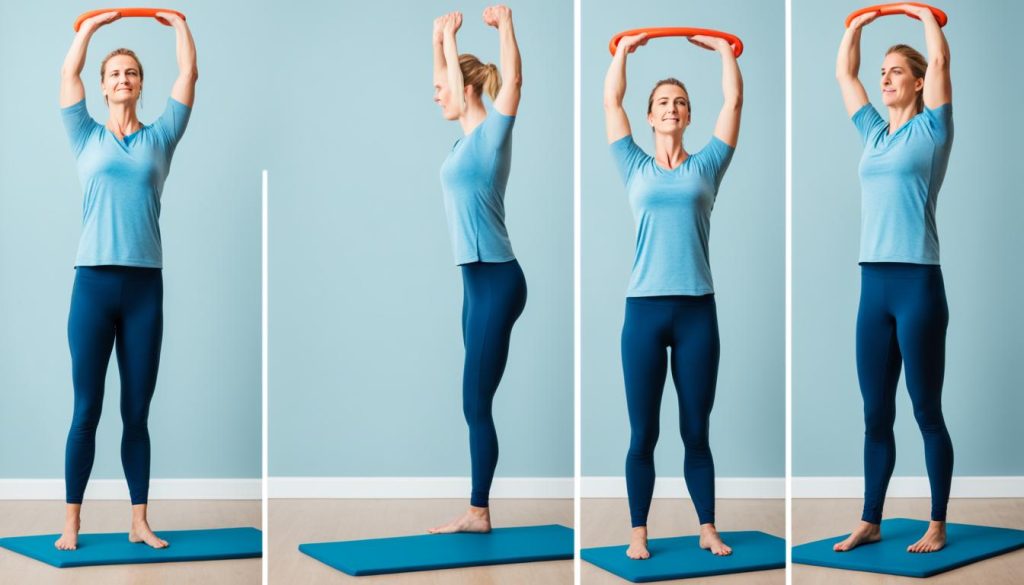Do you ever feel a sudden wave of dizziness when you stand up? It can be disorienting and even dangerous if it happens at the wrong time. But what causes this sensation, and more importantly, how can you prevent it?
In this article, we will explore the underlying causes of dizziness when standing up and provide you with quick tips and strategies to help you prevent and manage this common occurrence. Whether it’s a minor inconvenience or a persistent problem, you’ll discover valuable insights to keep your balance in check.
Stay tuned as we dive into the factors that contribute to dizziness when standing up and uncover the best practices for avoiding it altogether. Prepare to regain your stability and take charge of your daily activities without the fear of feeling lightheaded. Let’s get to the bottom of this issue together!
What Causes Dizziness When Standing Up?
Dizziness when standing up, also known as orthostatic hypotension, is often caused by a drop in blood pressure. Understanding the underlying causes of this condition can help you find effective strategies to prevent and alleviate dizziness when standing up.
Common triggers for dizziness when standing up include:
- Dehydration
- Sitting or lying down for a long period of time
- Overheating
- Alcohol consumption
- Pregnancy
- Certain medications
- Underlying health conditions
By identifying these triggers, you can take specific measures to prevent lightheadedness and avoid feeling dizzy when standing up. For example, staying hydrated by drinking enough water and avoiding prolonged periods of sitting or lying down can help regulate blood pressure and prevent dizziness. If you’re in a hot environment, seeking shade and ensuring proper cooling can also make a significant difference in reducing the risk of feeling lightheaded.
If you’re pregnant or taking medications that may contribute to dizziness when standing up, consulting with your healthcare provider can be helpful. They can provide guidance on managing your symptoms and adjusting your medication regimen if necessary.
It’s important to note that underlying health conditions, such as heart problems or neurological disorders, can also lead to dizziness when standing up. If you suspect an underlying condition, seeking medical attention for a thorough evaluation is crucial.
By understanding the causes of dizziness when standing up, you can implement strategies to minimize its occurrence and improve your overall well-being.

How Do I Stop Getting Dizzy When I Stand Up?
When it comes to preventing dizziness when standing up, there are several effective strategies you can incorporate into your daily routine for a more balanced and steady experience. By following these simple tips, you can significantly reduce the chances of feeling lightheaded or dizzy:
1. Stay Hydrated
One of the most crucial ways to prevent dizziness when standing up is by staying hydrated. Drinking an adequate amount of water throughout the day is especially important if you find yourself sweating profusely. Dehydration can cause a drop in blood pressure, leading to dizziness. So, make it a habit to drink enough water every day.
2. Stand up Slowly
Another beneficial technique is to take care when transitioning from a seated or lying position to standing up. Rather than getting up abruptly, give your body time to adjust. Slowly rise from your position and allow your blood vessels to constrict gradually, helping to maintain proper blood flow to your brain and prevent dizziness.
3. Avoid Overheating in Hot Environments
If you find yourself in a hot environment, take precautions to prevent overheating. Seek shade or find a cooler area to rest and recuperate. Overheating can worsen dizziness symptoms, so it’s essential to keep yourself cool in such situations.
4. Review Medications with Your Doctor
If you are on any medications, it’s vital to consult your doctor and review your prescriptions. Certain medications can contribute to dizziness, so your healthcare provider may adjust your dosage or switch you to a different medication to better manage your symptoms. Always follow your doctor’s guidance when it comes to your prescriptions.
5. Address Underlying Health Conditions
Undiagnosed or unmanaged health conditions can often be a factor in dizziness when standing up. If you have any underlying health conditions, consult with your healthcare provider to develop a treatment plan. Proper medical care and addressing your health concerns can contribute to preventing dizziness when standing up.

By implementing these strategies into your daily routine, you can significantly reduce the occurrence of dizziness when standing up. Remember to stay hydrated, stand up slowly, avoid overheating, consult your doctor regarding medications, and address any underlying health conditions. Taking these steps will help you maintain your balance and prevent dizziness, promoting overall well-being.
Managing Postural Dizziness
If you frequently experience postural dizziness, there are effective strategies you can implement to manage and reduce your symptoms. By following these tips, you can regain control and improve your overall well-being:
1. Consistent Exercise Routine
Maintaining a regular exercise routine can help improve blood volume and cardiovascular health, reducing the frequency and severity of postural dizziness. Incorporate exercises that promote circulation and strengthen your cardiovascular system. Start with low-impact activities, such as walking or swimming, and gradually increase the intensity over time. Consult with a healthcare professional before starting any new exercise program.
2. Gradual Physical Activity Increase
When engaging in physical activities, it’s important to gradually increase your level of activity rather than pushing yourself too hard. This gradual approach allows your body to adjust to changes in posture and prevents sudden drops in blood pressure that can lead to dizziness. Listen to your body and take breaks if needed.
3. Follow Treatment Plan
If you have underlying health conditions contributing to your postural dizziness, it’s crucial to follow your treatment plan as prescribed by your healthcare provider. This may include taking medications, implementing lifestyle changes, or undergoing specific therapies. Adhering to your treatment plan can help manage your symptoms effectively.
4. Wear Compression Stockings
Compression stockings can help improve blood flow and prevent blood from pooling in your legs, reducing the likelihood of postural dizziness. These stockings apply gentle pressure to your legs, promoting better circulation and minimizing the symptoms of dizziness.
5. Gradually Increase Fluids
Dehydration can contribute to postural dizziness, so it’s essential to drink an adequate amount of fluids throughout the day. Gradually increasing your fluid intake can help maintain proper hydration levels and reduce the risk of dizziness. Consult with your healthcare provider to determine the appropriate amount of fluids for your individual needs.

By implementing these strategies, you can effectively manage postural dizziness and improve your overall quality of life. Remember to consult with your healthcare provider for personalized advice and guidance based on your specific circumstances.
Lifestyle Modifications for Dizziness Prevention
Making certain lifestyle modifications can greatly contribute to the prevention of dizziness when standing up. By incorporating the following tips into your daily routine, you can minimize the chances of feeling dizzy and maintain better overall well-being.
- Stay Hydrated: One of the most effective ways to avoid getting dizzy when standing up is to ensure you are drinking enough fluids throughout the day. This is especially important before exercising or in hot environments, as dehydration can increase the likelihood of dizziness.
- Take Breaks and Stretch: If you have been sitting or lying down for an extended period of time, it’s essential to take breaks and engage in gentle stretching exercises. This helps prevent the pooling of blood in your lower body, which can lead to dizziness upon standing.
- Avoid Excessive Alcohol Consumption: Alcohol can have a dehydrating effect on the body and disrupt the balance of fluids. Limiting your alcohol intake can help avoid dizziness when standing up.
- Wear Comfortable, Nonrestrictive Clothing: Opt for loose-fitting and breathable clothing that allows for proper blood circulation. Tight or restrictive clothing can restrict blood flow, potentially leading to dizziness.
Implementing these simple lifestyle modifications can go a long way in minimizing the occurrence of dizziness when standing up. By staying hydrated, taking regular breaks, avoiding excessive alcohol consumption, and wearing comfortable clothing, you can significantly reduce the risk of experiencing dizziness in your day-to-day life. Maintaining a healthy lifestyle overall can contribute to better balance and overall well-being.
When to Seek Medical Attention?
In some cases, experiencing dizziness when standing up may indicate an underlying health condition. It’s crucial to recognize the warning signs and seek medical attention promptly to ensure appropriate diagnosis and treatment. If you encounter any of the following symptoms, it’s advisable to consult a healthcare professional:
- Persistent or severe dizziness when standing up
- Frequent episodes of dizziness when standing up
- Episodes of fainting or near-fainting
- Dizziness that interferes with your daily activities
Your doctor will help determine the underlying cause of your dizziness and recommend appropriate treatment options to manage postural dizziness effectively. Seeking medical attention can provide valuable insights and support in addressing your specific needs and optimizing your well-being.

Relevant Treatment Options
Depending on the cause and severity of your postural dizziness, your healthcare provider may recommend several treatment options. These can include:
- Medication adjustments
- Physical therapy exercises and balance training
- Wearing compression stockings to improve blood flow
- Dietary modifications, such as increasing salt intake
- Fluid management strategies
Keep in mind that treatment plans are individualized, based on your specific condition, medical history, and overall health. Your healthcare provider will guide you in navigating the most suitable treatment options tailored to address your postural dizziness effectively.
Exercise Guidelines for People with Postural Dizziness
For individuals experiencing postural dizziness, incorporating regular exercise into their routine can be beneficial. Exercise helps improve blood circulation, cardiovascular health, and overall well-being. However, it is important to choose exercises that are less gravitationally challenging and gradually progress to more upright positions.
Aerobic exercises such as semi-recumbent cycling or rowing can be a good starting point for those with postural dizziness. These exercises provide cardiovascular benefits without putting excessive stress on the body. They help increase blood flow to the brain and muscles, reducing the likelihood of experiencing dizziness.
As individuals become more comfortable with these exercises, they can gradually transition to more upright activities. Stationary cycling, treadmill walking, and elliptical training are exercises that challenge the cardiovascular system while allowing individuals to remain in an upright position. These exercises promote blood circulation and help improve balance and stability.
When engaging in exercise, it is essential to stay within target heart rate levels to ensure a safe and effective workout. Monitoring heart rate can help individuals gauge the intensity of their exercise and make adjustments as needed. It’s also important to hydrate adequately by drinking water before, during, and after exercise. Staying hydrated can prevent dehydration, which can contribute to dizziness.
Individuals with postural dizziness should consult with their healthcare provider or a qualified exercise professional to develop a personalized exercise plan. These professionals can provide guidance on exercise intensity, duration, and progression based on an individual’s specific needs and abilities.
| Exercise Tips for Managing Postural Dizziness |
|---|
| Start with low-impact aerobic exercises like semi-recumbent cycling or rowing. |
| Gradually progress to more upright exercises such as stationary cycling, treadmill walking, or elliptical training. |
| Monitor heart rate to stay within target levels and adjust exercise intensity as needed. |
| Stay properly hydrated by drinking water before, during, and after exercise. |
| Consult with a healthcare provider or exercise professional for personalized exercise recommendations. |
Conclusion
Dizziness when standing up can be an inconvenience, but there are ways to prevent and manage it effectively. One key step is to stay hydrated by drinking enough water throughout the day. This helps to maintain proper blood pressure levels and prevent a drop in blood pressure when you stand up.
Another important strategy is to avoid sudden movements. When transitioning from a sitting or lying position to standing, take your time and allow your body to adjust gradually. This can help minimize the chances of experiencing dizziness.
Additionally, it’s essential to seek medical attention when needed. If you experience persistent or severe dizziness, frequent episodes of dizziness when standing up, or if it interferes with your daily activities, consult with your healthcare provider. They can help identify the underlying cause and recommend appropriate treatment options.
By following these preventive measures and seeking proper care, you can take control of your symptoms and reduce dizziness when standing up. Remember, prioritizing your well-being and implementing these strategies can greatly improve your overall quality of life.




